Definitive Guide to SaaS Reverse Trials
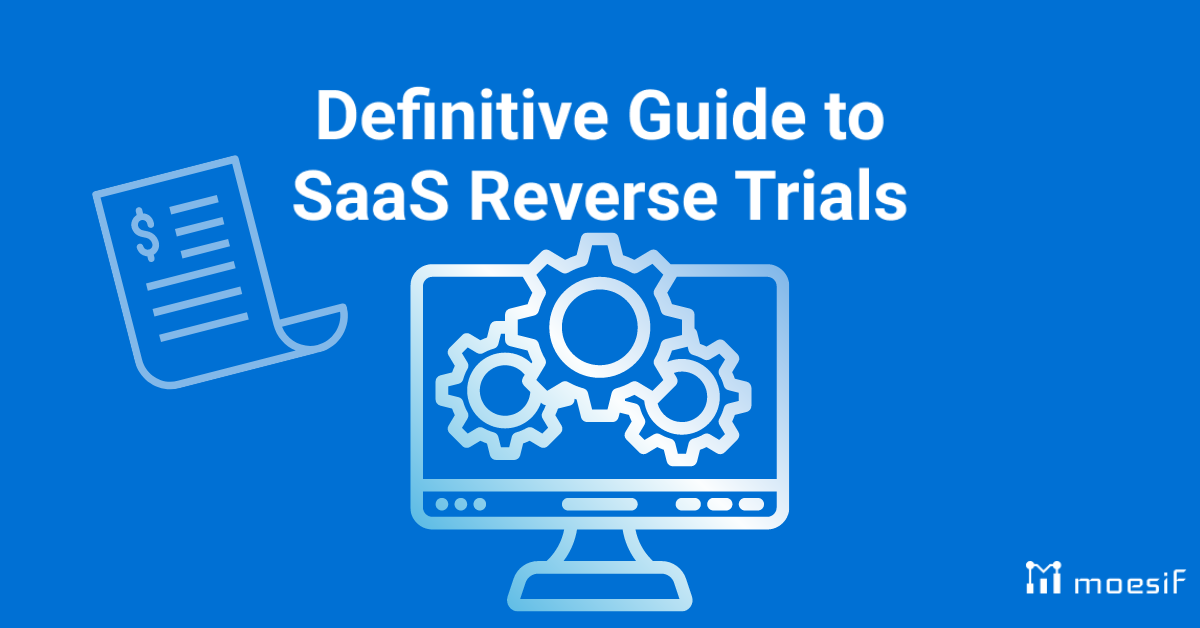
In the world of software-as-a-service, product-led growth (PLG) is an easy way to enable users to experience the value of a product firsthand, without restrictions. PLG can drive adoption, retention, and sustainable business growth with its robust and open framework. But what drives PLG best, a freemium model or a free trial? With freemium, your top of funnel growth can skyrocket, while free trials see a 2-3x higher conversion rate thanks to urgency (ie, users lose access immediately on trial end).
While both have appealing factors, there’s a way to combine the benefits of both freemium and free trials while still maintaining your bottom line.
Meet the ‘reverse trial’. In a reverse trial, new signups start with a limited time trial of your paid features. This means they have access to your entire product, giving them a true taste of your total value. At the end of their trial, they can either purchase your product, or downgrade to a free tier. By setting up a reverse trial, both acquisition and conversion goals can be met. Beyond this, your product’s true, unlimited potential can be unleashed. By allowing users to understand the premium benefits of your product, you can achieve true PLG in the self-service developer world.

Most PLG companies employ a free trial or a freemium model, but very few have both. This is because combining a free trial with a freemium framework does not necessarily mean a successful reverse trial. With a multitude of hybrid approaches, there are two main types of reverse trial that can successfully be offered: an optional reverse trial and a required reverse trial. To understand the difference between these two more clearly, let’s look at some examples.
Optional Reverse Trial - Kong
An optional reverse trial offers users the option of starting with a free plan or a trial of a premium tier. If you register for a premium plan demo, there is an option at a later date to drop down to a free tier. Generally, these kinds of plans do not require a credit card to sign up, but rather rely on collecting user information (work email, phone number, etc) in order to establish a relationship.
One such example of an optional reverse trial is Kong.
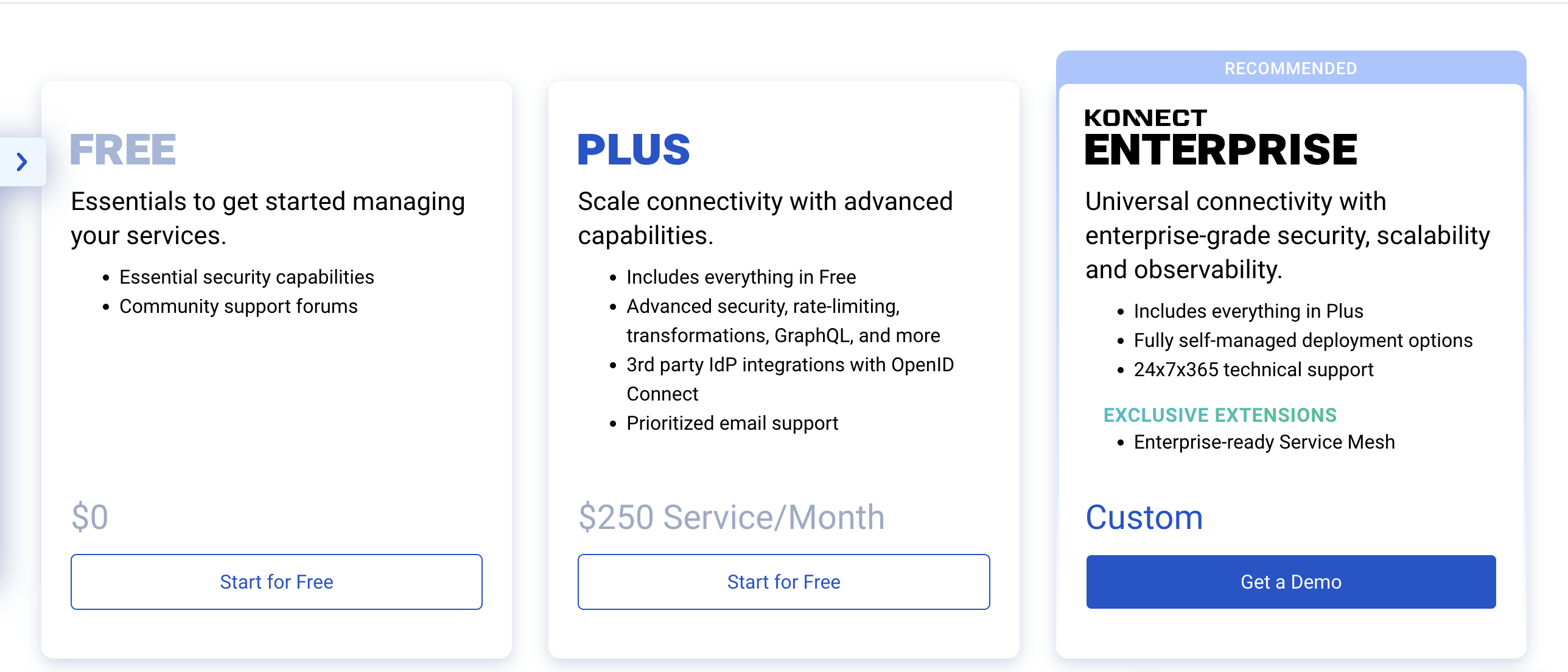
Kong offers a free, no-frills tier of Konnect for customers who know they want to use Kong’s APIs but do not have need for the offerings in Plus or Enterprise. The ‘Plus’ level tier allows for a trial run of Kong’s full product offering, before users are pushed to make a decision on payment. Finally, Kong allows potential customers to connect with their sales team for enterprise level feature demonstrations. Once inside the program, Kong Konnect’s dashboard lets you know how long is left in your trial length as well as allows you to compare features.
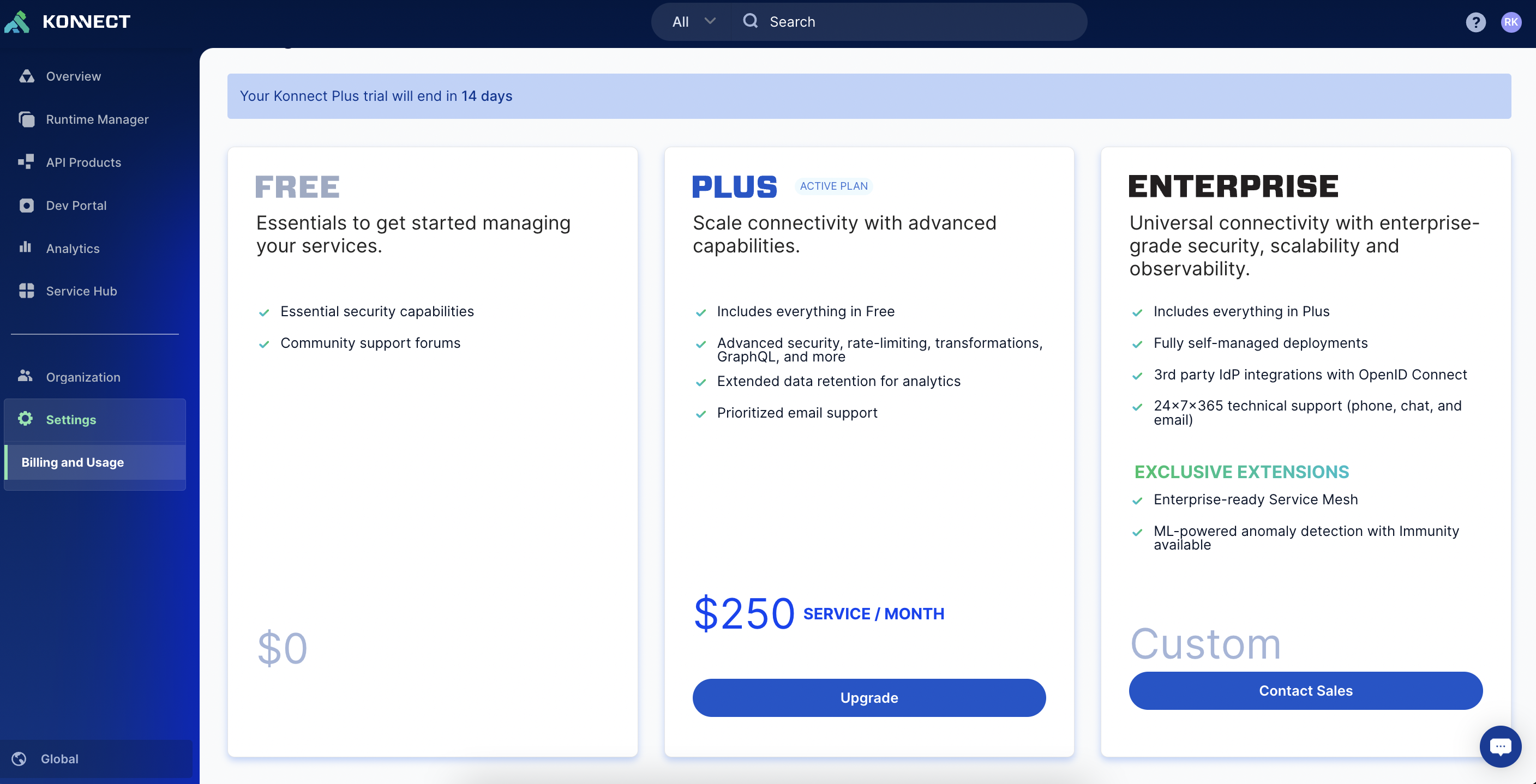
For individuals that know they want to use a product but are unsure how much usage they will actually consume, a reverse trial is the natural path to take: by testing the premium tools and integrations a product offers, you can more clearly understand the true value the product can offer to your team, product, and users. By offering the option to drop down to a free tier, organizations can foster trust and confidence around changing usage tiers with their customers.
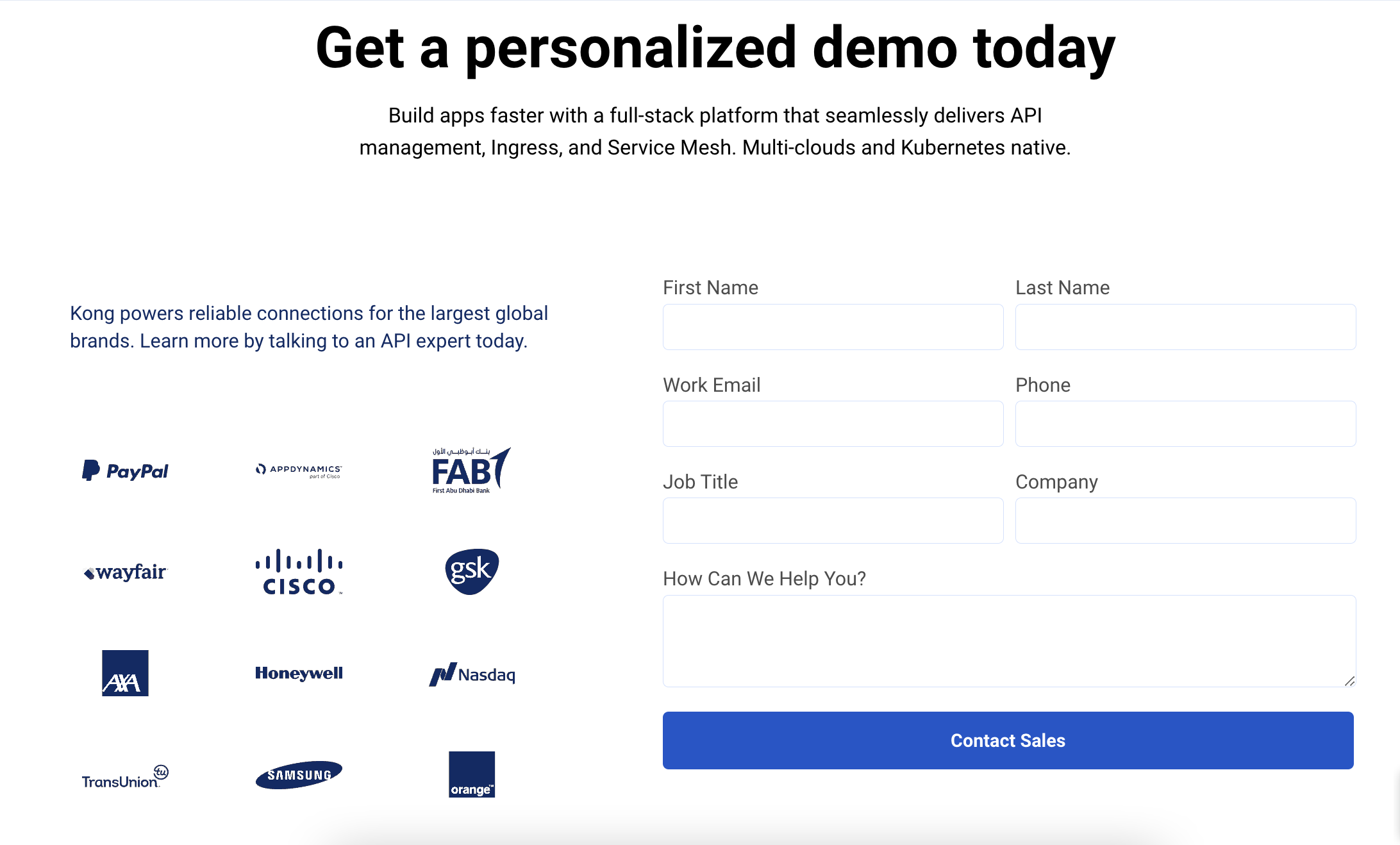
To set up the enterprise level of Konnect, users must contact the Kong sales team directly with information about their specific use case. This helps to strengthen Kong’s understanding of a potential customer’s expectations prior to a demo call, all while maintaining an honest and trustworthy relationship given their product transparency from the Plus tier’s reverse trial.
To achieve short term monetization via PLG is not easy; many users are distrustful of “free trials”, as they often seem like opportunities to collect personal information. To truly have success for a freemium experience, real value must be provided to potential customers before requesting a decision around subscription. By allowing users to engage with your product in a self-service manner, users become not only leads, but advocates. Successful, happy users are the best asset internal sales and marketing teams could ask for.
Mandatory Reverse Trial - Moesif
With a mandatory reverse trial, every new user who signs up for your product gets enrolled in a free trial. This required trial has a finite cap, generally time or usage, before a downgrade to the free tier offering occurs.
A great example of this is us! With a breakdown on our pricing page to show the feature differences between tiers, Moesif takes the stance of a true sandbox test. After all, how can an organization know if an API provider is a good fit without tinkering with their whole product?
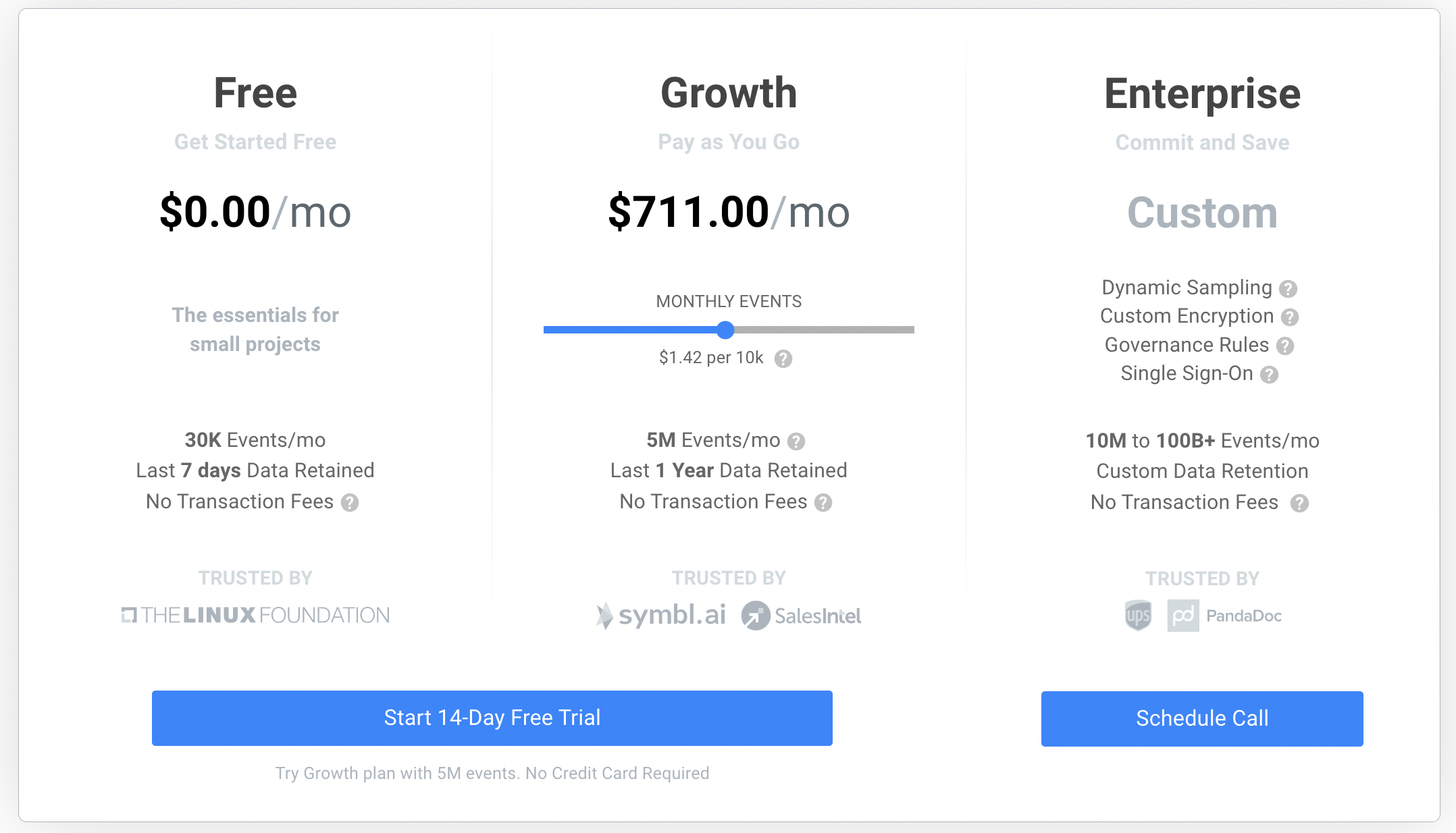
Moesif offers a free trial of the Growth tier immediately upon signup for two weeks which enables new signups to test all the advanced features and up to 10 million events. As users get close to the end of their trial, Moesif sends behavioral emails to let them know they will be downgraded to the free tier. This ensures customers are able to get to their “aha moment” and see the full value of Moesif before the trial expires, but the trial also helps drive a conversion to paying. New signups are more likely to convert if they know something will be taken away that they already have vs trying to subscribe to something new. Yet, new signups also gain the peace of mind that a free tier still exists. This drives a larger adoption funnel as well. Hobbyists and individual developers can still get some benefits of Moesif which helps with word of mouth, even if not paying.
This requirement for potential customers results in more robust use case demonstrations for API-first companies. By enabling a direct dialogue between customer and sales, Moesif is able to get a deep understanding of a customer’s specific needs and challenges. This personalized approach not only fosters a stronger connection between the customer and Moesif, but increases the likelihood of delivering a compelling use case that resonates strongly with a customer’s business objectives.
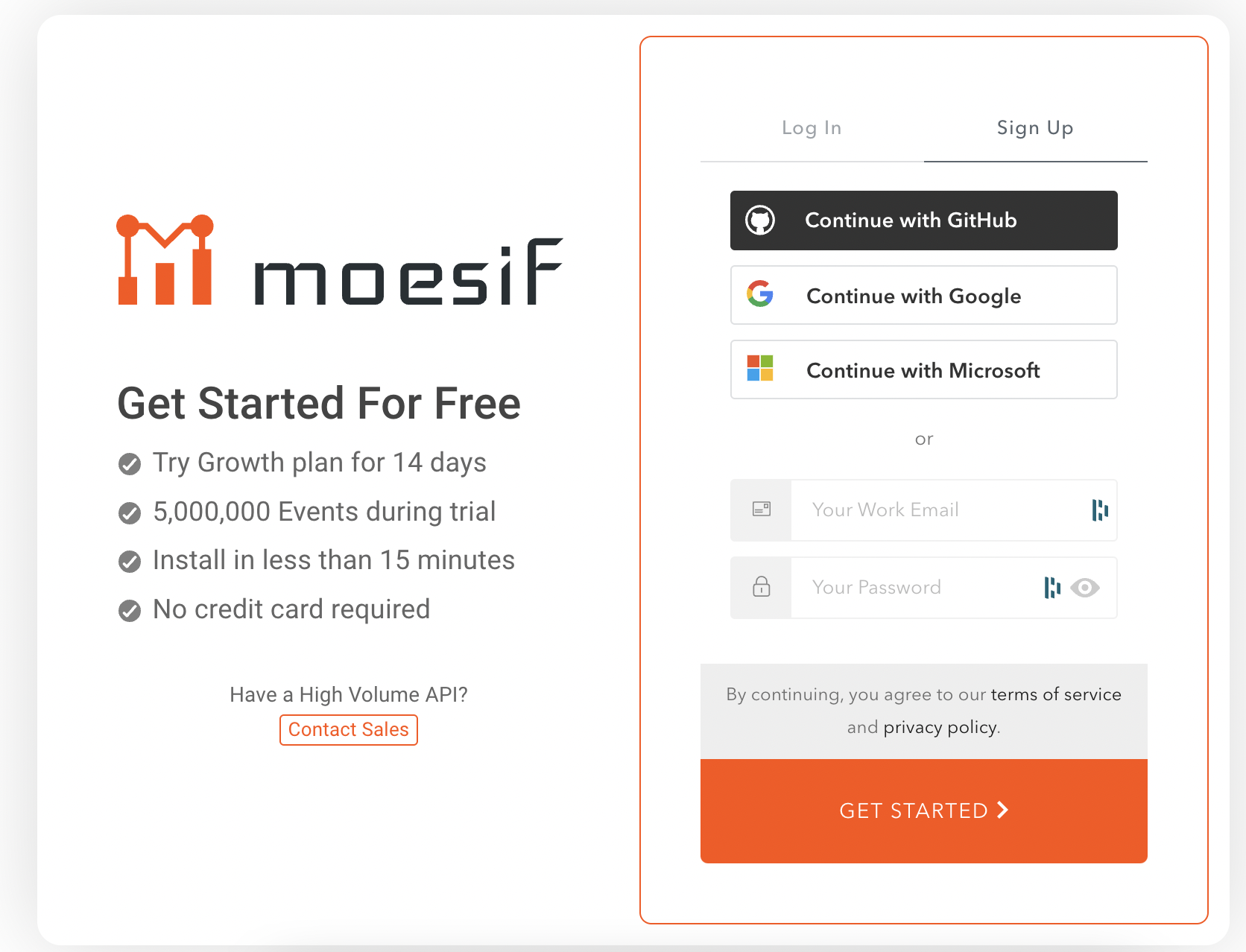
Is My Product A Good Fit For a Reverse Trial?
Reverse trials have a lot of pros, but some extremely limiting cons. Reverse trials are a faster road to revenue generation, as they can speed up the sales process dramatically. With a reverse trial, users face the payment decision point quicker due to the threat of their trial ending. A committed user can convert right away when they understand the full range of how your product can improve theirs. This can have a significant impact on your recurring revenue in the moment, which can be critical for smaller organizations.
However, a reverse trial may not be a good option for your product:
- Your free and premium tiers solve different issues: If you require users to sign up with a trial, you may be forcing them into a more complex scenario than they require. If your users could easily be overwhelmed or confused because your Free and Premium offerings tackle different issues, you may not be able to sell your value proposition.
- Your product may suffer with multi-account signups: Reverse trials are best for products that require time invested from users. If there is no impetus to pay, users can sign up over and over again with false credentials, destroying any reason to pay for your product. If users can sign up for multiple accounts and still see value from your product, a reverse trial can be more harmful than helpful.
- Cost-to-Serve: A reverse trial is most successful if the cost for a freemium and trial offering can be served at scale. If the costs of running trials outweigh your current freemium offering, a reverse trial will become a cost-sink. Because the cost of servicing your product may be high, it must be economically sound to offer a reverse trial on top of your current tiers.
Implementation and Best Practices
Implementing an effective reverse trial strategy involves a systematic approach that maximizes user engagement and conversion based on your product and current users.
- Clear Usage Limits: Begin with transparent usage limits for the free version of your product. These limits should be carefully chosen (and backed by your user data) to provide value to users while encouraging them to upgrade. Communicate these limits during a simple but effective onboarding process to manage user expectations, as transparency fosters trust and lets users understand the benefits of upgrading.
- Communication Channels: Establishing communication channels is essential during the reverse trial period. Ensure that users have easy access to support (whether through chat, email, or documentation). This proactive support demonstrates your commitment to user satisfaction while simultaneously triaging customer issues, encouraging a positive perception of your product.
- Seamless Downgrade Options: It’s important to offer seamless downgrade options as well as upgrade ones. Users should have the flexibility to switch back to the free version if they find it better suits their needs. Providing intuitive downgrade buttons within the user interface can simplify this issue. By taking a user-centric approach, you can prevent frustration and maintain goodwill, even if users decide to revert to a free account.
- Optimizing User Experience: Design the free version of your product to showcase the core value of your product while subtly introducing the benefits of the premium features. Prioritize user feedback and iterate on pain points to refine the experience continually.
- Gradual Feature Introduction: Consider gradually introducing premium features to users during the reverse trial. This can allow users to experience the value of these features firsthand, creating a sense of anticipation and motivation to upgrade. By exposing users to features gradually, you can avoid overwhelming users with a sudden influx of functionality.
At its core, the reverse trial approach revolves around a user-centric philosophy, elevating user experience and decision-making to the forefront. This concept is bolstered by commitment to transparency, clearly defined usage limits, and open channels of communication. Software providers are starting to recognize the potential of reverse trials, considering them as a means to an end for reshaping user engagement and perceptions. By incorporating a reverse trial strategy into their subscription models, API providers can move toward increased conversions and, more importantly, cultivate enduring and meaningful customer relationships.






